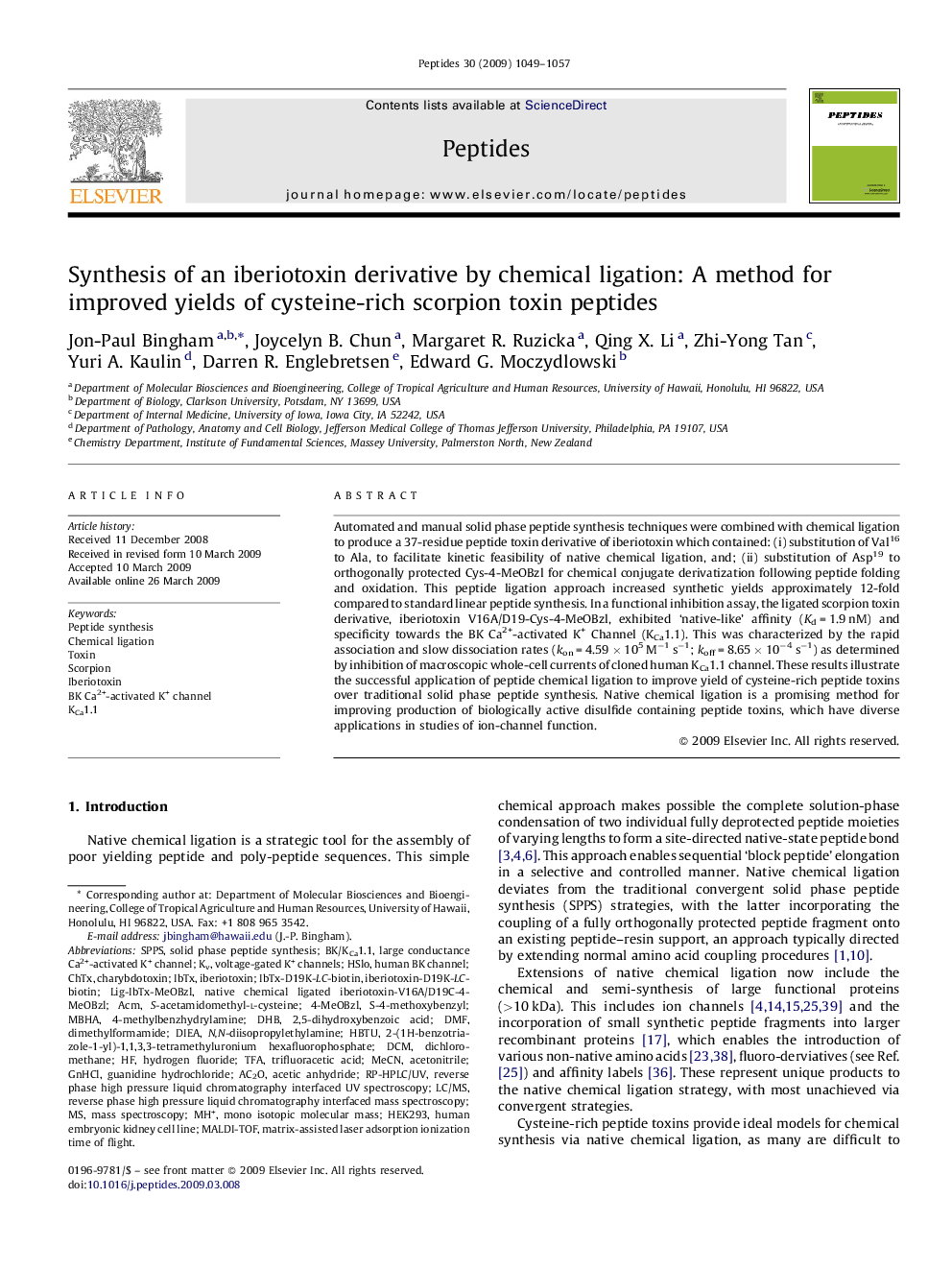| Article ID | Journal | Published Year | Pages | File Type |
|---|---|---|---|---|
| 2006844 | Peptides | 2009 | 9 Pages |
Automated and manual solid phase peptide synthesis techniques were combined with chemical ligation to produce a 37-residue peptide toxin derivative of iberiotoxin which contained: (i) substitution of Val16 to Ala, to facilitate kinetic feasibility of native chemical ligation, and; (ii) substitution of Asp19 to orthogonally protected Cys-4-MeOBzl for chemical conjugate derivatization following peptide folding and oxidation. This peptide ligation approach increased synthetic yields approximately 12-fold compared to standard linear peptide synthesis. In a functional inhibition assay, the ligated scorpion toxin derivative, iberiotoxin V16A/D19-Cys-4-MeOBzl, exhibited ‘native-like’ affinity (Kd = 1.9 nM) and specificity towards the BK Ca2+-activated K+ Channel (KCa1.1). This was characterized by the rapid association and slow dissociation rates (kon = 4.59 × 105 M−1 s−1; koff = 8.65 × 10−4 s−1) as determined by inhibition of macroscopic whole-cell currents of cloned human KCa1.1 channel. These results illustrate the successful application of peptide chemical ligation to improve yield of cysteine-rich peptide toxins over traditional solid phase peptide synthesis. Native chemical ligation is a promising method for improving production of biologically active disulfide containing peptide toxins, which have diverse applications in studies of ion-channel function.
